You are reading this on a digital device. On a daily basis for decades you have spent a lot of time screens. The good news is that digital decluttering is trending and you can learn to unplug.
I share products I love with you through affiliate links, which means if you buy something through one of these links, I get a small commission at no extra cost to you.
The Need for Digital Decluttering in Our Lives
In today’s fast-paced, technology-driven world, people don’t even realize they have become addicted to their devices. It’s so easy to become overwhelmed by the constant influx of notifications, emails, and social media updates.
As our reliance on digital devices continues to grow, so does the need to reduce digital clutter. Digital decluttering also known as digital minimalism, is the process of reducing technology use and organizing our digital spaces. It is an essential practice for maintaining mental health, increasing productivity, and achieving better sleep.
This blog post will provide actionable tips and tricks to help you embark on a digital detox journey, leaving you feeling refreshed, focused, and in control of your digital life.
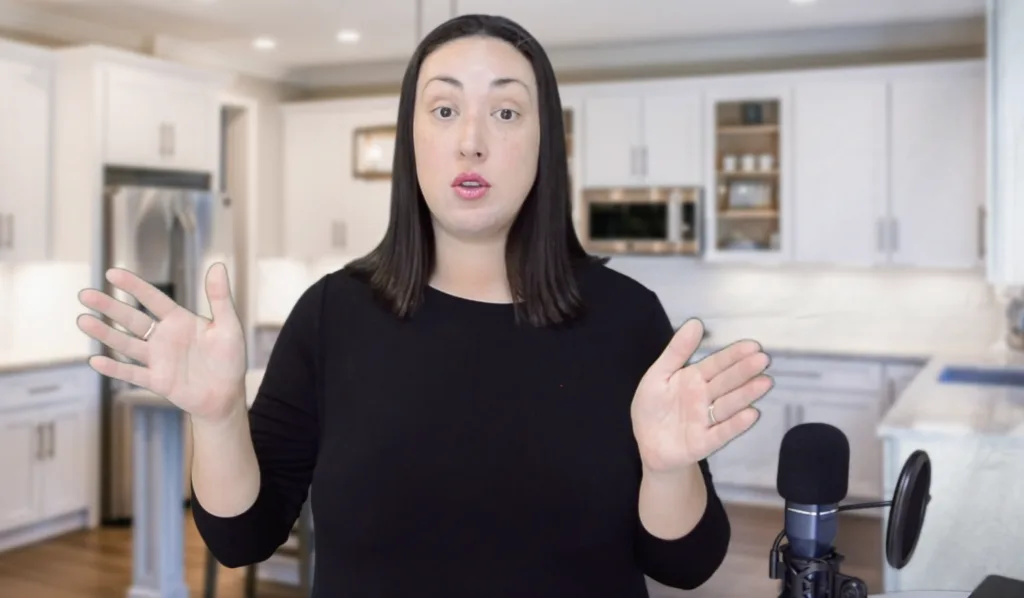
Your life is filled with physical clutter and digital distractions. Follow this online course to eliminate what is not important in your life.
Assess Your Digital Habits
The first step in solving a problem is to recognize that it does exist. -Zig Gigler
There is no guidebook that can definitively tell you that you have a technology addiction. You have to assess for yourself if devices cause enough problems in your life to become a digital minimalist.
The First Step to a Clutter-Free Digital Life
Before diving into the world of digital decluttering, it’s crucial to understand your current technology usage patterns.
Identifying areas of excessive use and recognizing the purpose of all the mobile apps or digital devices in your life will help create a personalized decluttering plan.
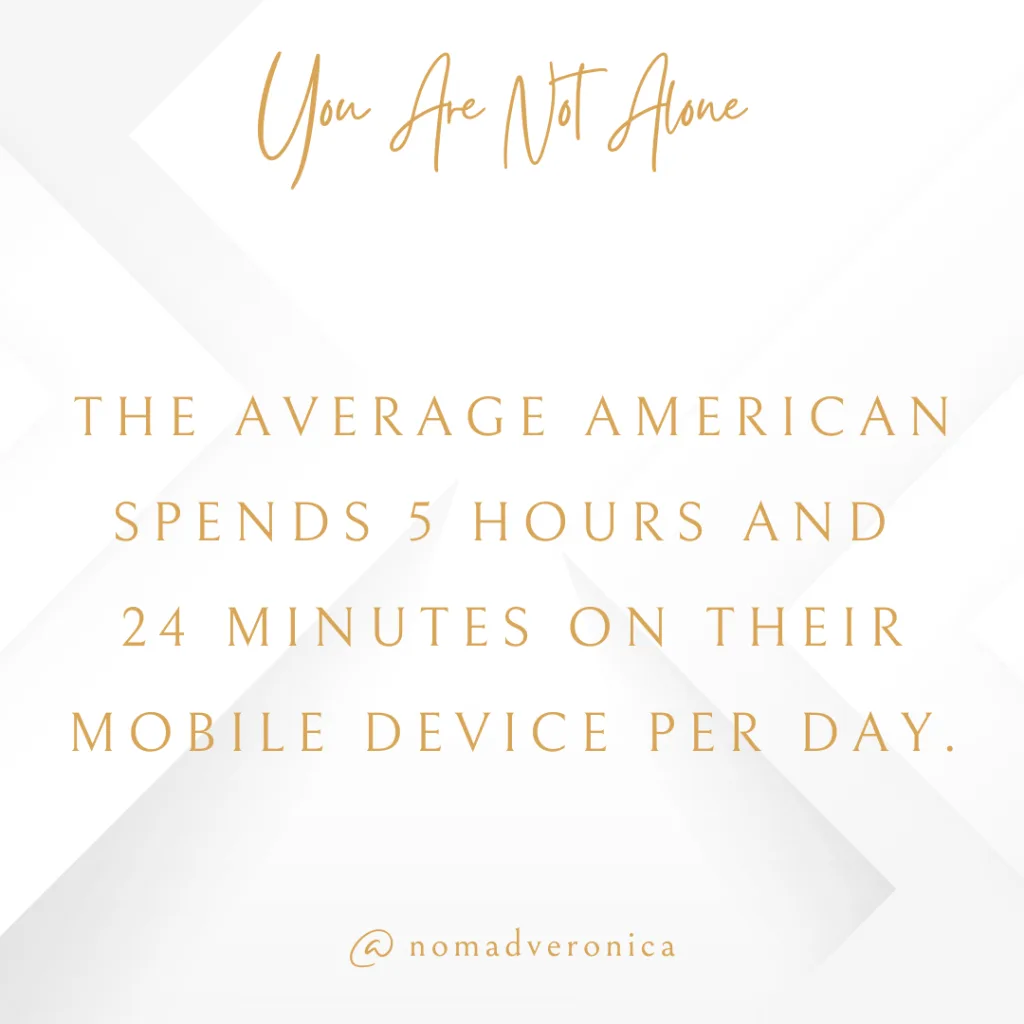
Track Your Screen Time and App Usage
The average American spends 5 hours and 24 minutes on their mobile device per day. That’s over 82 entire days per year on a mobile phone. At this point your digital lives have become your real life.
Smartphones and devices have built-in features to track your screen time and app usage. Analyze this data to get a clear picture of your digital habits.
Take note of the time spent on various mobile apps apps, and determine which ones are consuming the most time.

Identify Areas of Excessive Use
You are part of these phone statistics that say Americans touch their phones 96 times per day. After reviewing your own personal usage data, pinpoint the apps or devices that seem to be taking up the majority of your time.
Are you spending countless hours scrolling through social media accounts or binge-watching the latest news or are streaming services the culprit?
Identifying these areas of excessive use is the first step to implementing effective digital decluttering strategies.
Determine the Purpose of Each App or Device
Evaluate the purpose and value of each app or device in your life. Is it helping you stay organized, connecting you with loved ones, or simply wasting your time?
You might be trying to convince yourself that multiple email accounts is a good idea but in reality it just gives more opportunities to end up on junk email lists.
Categorize your digital files based on their importance, and consider uninstalling or reducing usage of those that don’t add value to your daily routine.
By assessing your digital habits and understanding your technology usage patterns, you’ll be well-equipped to create a customized digital decluttering plan that will ultimately lead to a more balanced and focused life.
Set Clear Goals and Priorities
The best way to make changes to your personal use of technology is to have a plan. Simply stating that you will spend less time online is doomed to fail.
Crafting a Personalized Digital Decluttering Plan
Once you’ve assessed your digital habits, the next step in your digital decluttering journey is to set clear goals and priorities.
Maybe you have old files you need to move to an external hard drive. There could be old emails you’ve been intending to create a folder system for. Your photo storage may be better off in cloud storage.
Establishing a solid plan of attack towards your computer files will help you stay on track and make meaningful progress towards reducing technology use.
Define Your Technology Use Goals
Begin by setting specific, achievable goals for reducing your screen time or app usage. For example, aim to cut down social media usage by 30 minutes a day or limit your daily TV streaming to two hours.
Review: 2023 Smartphone Usage Statistics for ideas
Having clear objectives will provide motivation and guidance throughout the decluttering process.
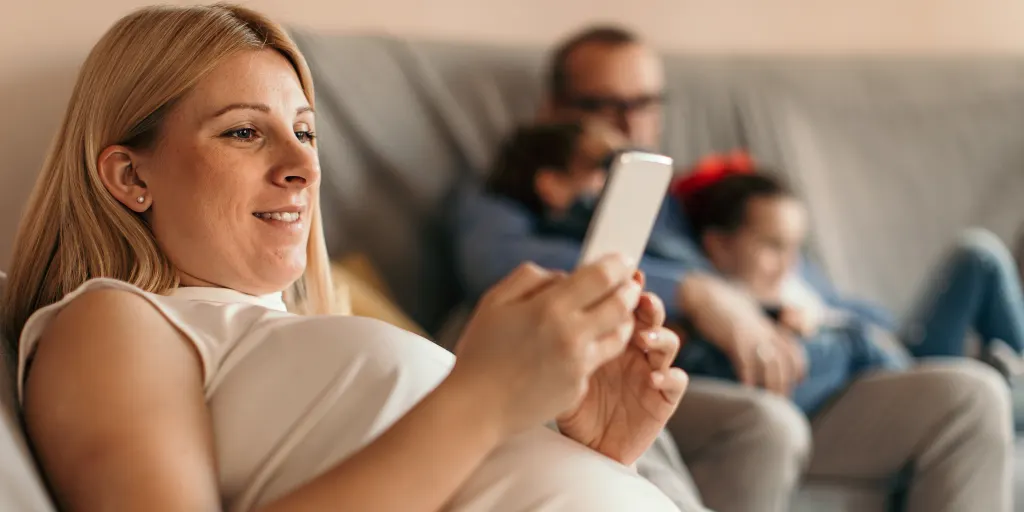
Prioritize Apps and Devices Based on Their Value
Try to fast forward and imagine what you will be thinking on your deathbed. Rank your mobile app and overall digital device use based on what adds the most value to your life. This prioritization will help you decide which apps to limit or uninstall and which devices to use less frequently.
You are a cog in the attention economy and the most important thing about a decluttered digital space is that it gives you back your time freedom. You will have extra time that used to be occupied by dings, bright colors, and digital distraction.
Commit to a Realistic Plan for Reducing Technology Use
With your goals and priorities in mind, create a realistic plan to reduce your technology use. Below you will find the 3 crucial ways I’ve found to embark on the daunting task of digital minimalism.
Remember, consistency is key. Stay committed to your plan and focus on your goals to reclaim your personal lives.
Make sure your plan is practical and achievable, so you’re more likely to stick to it.
You have a limited number of hours in your life. The mission of minimalism is to make the most of your time. Learn to put more focus on what really matters to you.

#1 Create a Digital-Free Zone
The physical space you occupy has a lot of control over your daily life. One of the best solutions to combat digital time wasting is to set physical boundaries around usage.
Establishing a Haven for Unplugging and Relaxation
Designing a digital-free zone in your home is an effective way to encourage mindful technology use and enhance your overall well-being. This is your area to unplug from the noisy world filled with unread emails and an endless to-do list.
By creating a space where you can disconnect from the digital world, you’ll be able to enjoy moments of peace and tranquility amidst your busy life.
Designate a Specific Area in Your Home for Digital Detox
Choose a room or area in your home where you must disconnect from technology, such as a cozy reading nook, your bed, or an inviting outdoor space. Disrupting your habitual device usage is a great way to change your daily habits.
Ensure that this area remains free from digital devices, like smartphones, tablets, and laptops.
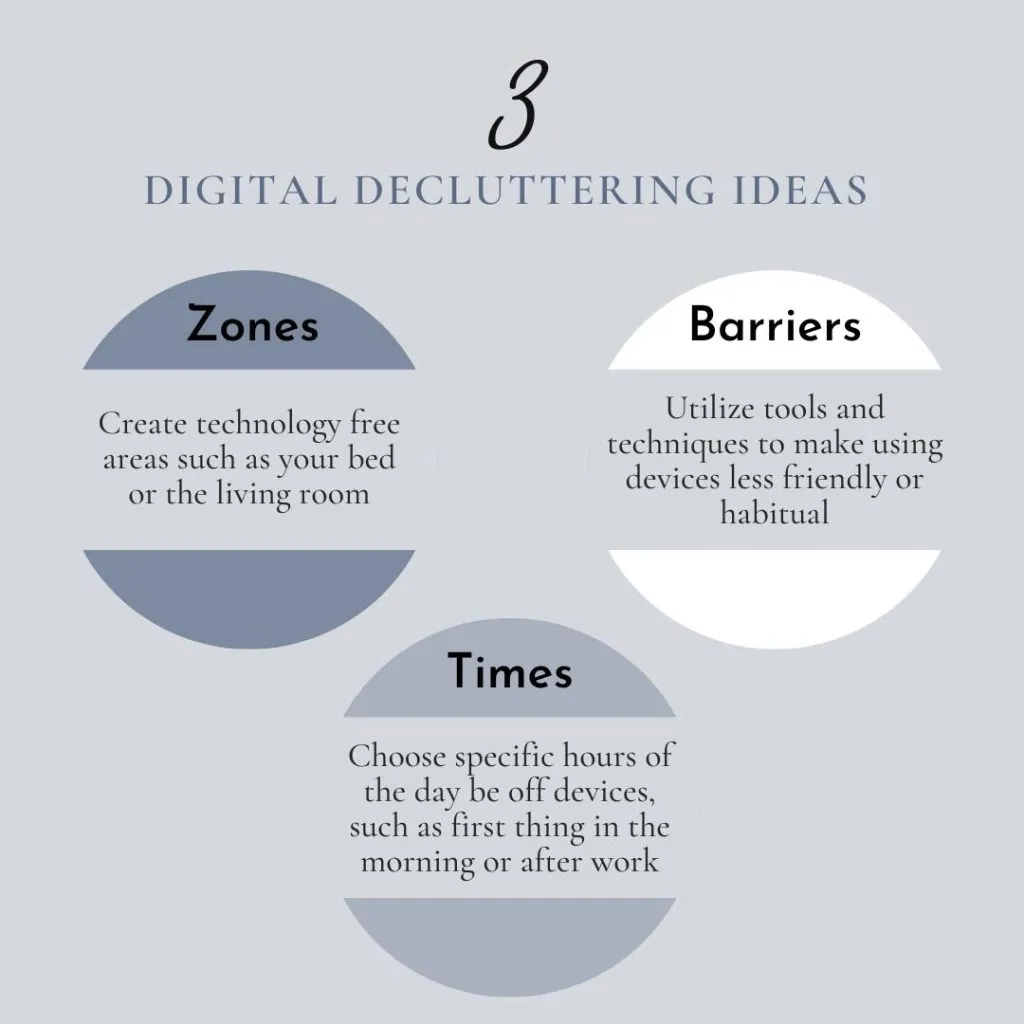
Establish Boundaries for Technology Use in That Space
Set strict rules for technology use in your digital-free zone. If you are having trouble sticking to your digital boundaries, create a visual cue such as a sign or rope the area off with ribbon to remind yourself.
Having these boundaries in place will help create a space that encourages relaxation, mindfulness, and focused activities.
Encourage Family and Friends to Join in the Digital Detox
Invite your loved ones to participate in a digital declutter challenge by spending time together in the digital-free zone. Share activities such as reading, meditating, or playing board games, and enjoy the benefits of unplugging as a group.
Creating a digital-free zone in your home can make a significant impact on your overall well-being. By dedicating a space to disconnect from technology, you’ll foster a more balanced, mindful, and focused lifestyle.
#2 Implement Tech Free Times
Your personal life suffers because of your screen time. Create off-limits times from your devices to ensure you are present for the moments in your life worth remembering. Your email inbox and work team members can wait for you to be done with your off technology life.
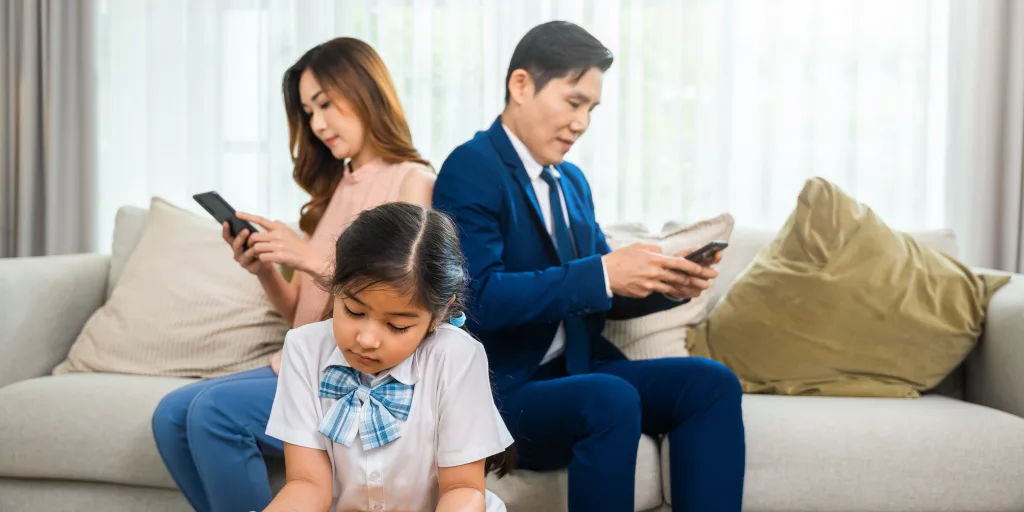
Promoting Healthy Sleep and Mindful Evenings
A “tech curfew” is a designated time at the end of the day during which you disconnect from digital devices. Implementing this practice can lead to improved sleep quality, reduced stress, and enhanced mindfulness.
The blue light and colorful stimuli makes getting to sleep difficult. Having a daily hard stop on screen time is a better option to wind down for the day and maintain your circadian rhythm.
Set a Designated Time Each Day to Unplug from Technology
Choose a specific time each evening when you’ll disconnect from your devices. This could be an hour or two before bedtime, allowing you to unwind and relax without the constant distractions of technology.
If you want to go a little bolder, try banning technology after work or after picking up the kids from school. Spending too much time scrolling detracts from the connection and enjoyment of your time at home.
Use a Traditional Alarm Clock Instead of Your Phone
Swap your smartphone’s alarm for a traditional alarm clock. This is an easy way to prevent late-night screen time and ensure your bedroom remains a peaceful, device-free sanctuary.
Knowing your phone usage triggers allows you to make more conscious choices about your phone usage. You know that having your phone within arms reach means you mindlessly scroll late at night or first thing in the morning. End that bad habit by buying a proper alarm clock.
Messy to Minimalist Online Course
One of the reasons you don’t get off your tech is that you don’t know what your ultimate life goal is. This course goes beyond minimizing to help you determine what truly matters in your life.
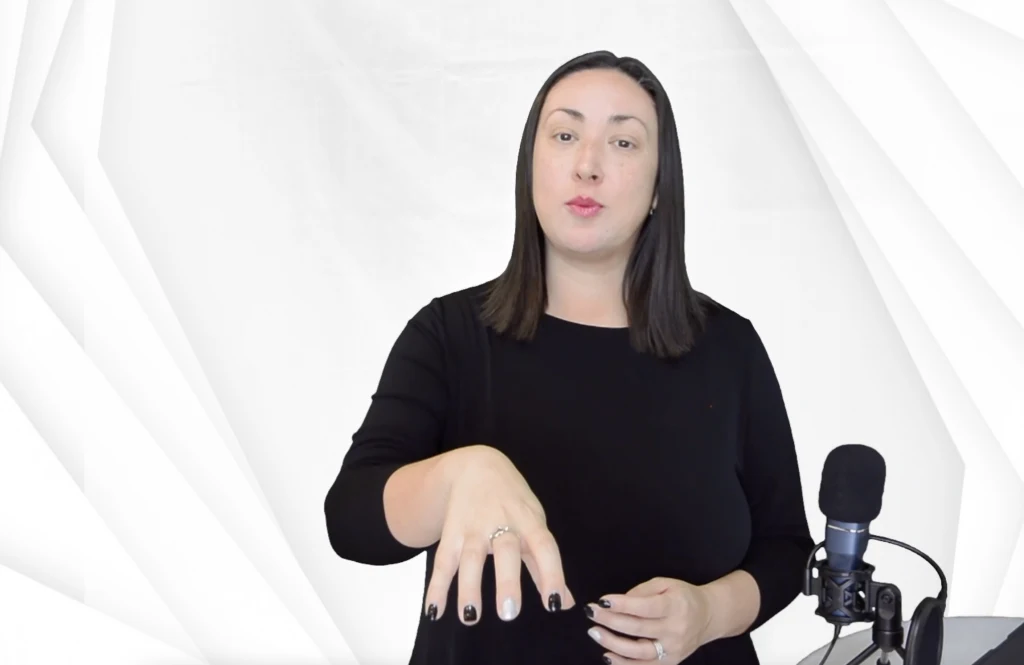
Limit Screen Time Before Bedtime for Better Sleep
The blue light emitted by screens can interfere with sleep by suppressing melatonin production. Aim to reduce screen time at least two hours before bed, and consider using blue light filtering apps or glasses if necessary.
By implementing a tech curfew, you’ll be taking a significant step towards a more balanced and mindful digital life. Establishing these evening routines will help you prioritize self-care, improve your sleep, and foster a healthier relationship with technology.
#3 Declutter Your Devices
Eliminate the biggest culprits of digital time waste. You can delete certain apps, create a less hospitable phone experience, or get rid of a device all together.
By decluttering your devices, you’ll create a more organized and efficient digital space that promotes productivity and focus. Regularly maintain and update your devices to ensure they continue to serve your needs without adding unnecessary stress to your life.
Simplifying and Organizing Your Digital Space
A crucial aspect of digital decluttering is organizing and tidying up your devices. Your cluttered desktop, random mailing lists, and poor organizational system all lead to wasted time on technology.
By eliminating unnecessary apps, turning off distracting notifications, getting your downloads folder under control, and unsubscribing from email subscriptions, you’ll create a more streamlined and efficient digital environment. This ultimately reduces your screen time and creates a happier life.
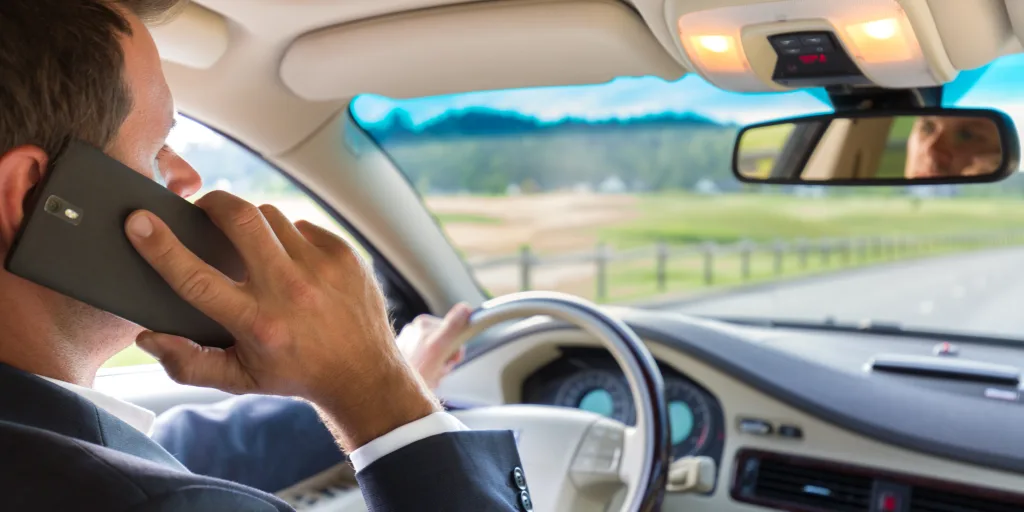
Organize and Delete Unused Apps
Go through your devices and delete any apps that you no longer use or that don’t provide value. Your computer desktop screen and phone home screen should be free from visual clutter.
Organize the remaining apps into folders or categories for easy navigation, which will save time and reduce mindless scrolling.
Turn Off Unnecessary Notifications
Examine the notification settings on your devices and disable those that aren’t essential. The vast majority of digital data you receive is unwanted emails. You let your thoughts be constantly interrupted and distracted for pointless spam.
The easiest way to get a person’s attention used to be by saying their name. Your brain would pick up hearing your name even in a crowded room. Our brains have been re-programed to most easily respond to digital notifications. I find that to be a very sad fact.
By reducing the number of notifications you receive, you’ll minimize distractions and create a more focused life in the real world. This is especially important if you are trying to manage ADHD symptoms.

Turn Off Cellular Data
Another point of control you have is determining which apps are allowed to utilize cellular data. You can manually go in and toggle off any apps ability to reach you while you are out enjoying your life.
Preventing email services or social media from pinning you on a regular basis will change your digital experience. Not to mention the reduction of constantly fetching data improves your device’s battery life.
Unsubscribe from Unwanted Email Newsletters and Alerts
Take control of your email inbox by unsubscribing from email newsletters, promotional messages, and alerts that don’t interest you. Permanently eliminating those emails will increase the likelihood you will see important messages.
Utilize email management tools or unsubscribe features to maintain a clutter-free inbox and reduce digital overwhelm. If this seems like a daunting task, try an email explosion, it’s liberating.
Remove Old Phone Contacts
There is a tendency to think we need to readily keep all information we’ve ever known within our digital devices. You keep your college roommates parents phone number and your old neighbors dog walker or that tech genius who fixed your computer that one time in another city.
If someday you need to contact that person it may take some extra effort to look them up on social media or track down their phone number. But, the mental capacity and valuable storage space you waste on retaining that information forever is not in keeping with the importance of knowing that phone number.
Digital Decluttering an Entire Device
Making more responsible technology choices is sometimes difficult. You may realize that your gaming console or television is causing you to waste a lot of time. If creating technology free spaces or times isn’t enough to help you make better choices, you might consider eliminating that device entirely.
People live happy functional lives without a pS5 or Nintendo Switch all the time. There was an era before streaming services when people could not access endless on demand entertainment designed to fill every waking second with new content.
Utilize Time Limits and Control Features
Device manufacturers don’t want consumers to be savvy with all the ways they can put limits on their own technology usage. It’s better for the corporations if you engage in all the ways they solicit your attention.
But, my digital minimalist friend, at the end of this article you are going to be armed with all the tools to take back control.
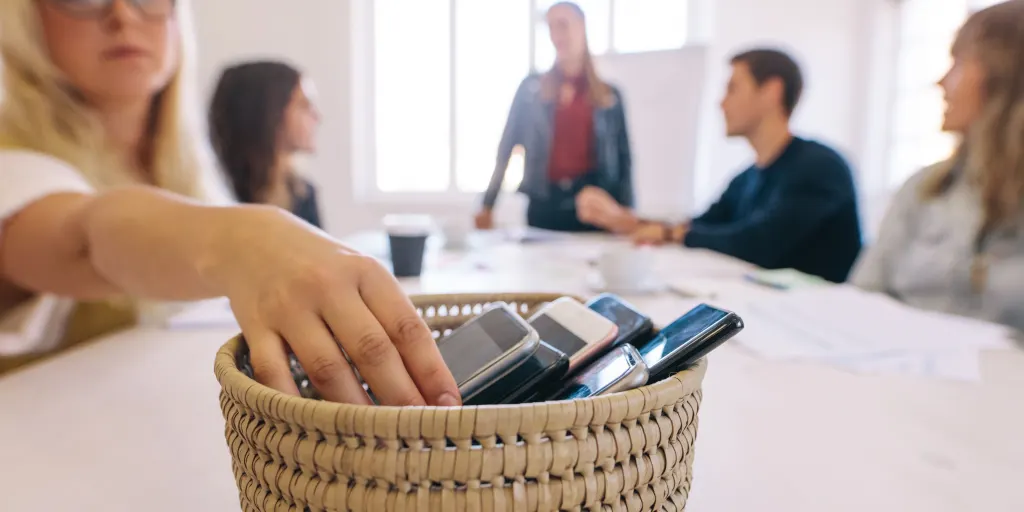
Harnessing Technology for Mindful Usage
While the goal of digital decluttering is to reduce technology use, it’s essential to recognize that technology itself can be a valuable tool in achieving this goal. Kind of ironic, eh?
By leveraging app time limits, parental control features, and accessibility functions, you can establish boundaries and develop healthier digital habits.
Set Daily Time Limits for Specific Apps or Devices
Many devices and apps offer built-in time limit features, allowing you to set daily usage restrictions. Use these settings to allocate specific amounts of time for each app or device, ensuring you stay within your desired limits and maintain a balanced digital life.
Use Parental Controls to Restrict Access to Certain Content
Parental control features aren’t just for kids. Utilize these settings to block access to distracting websites, apps, or content, promoting a more focused and intentional digital experience.
Explore Accessibility Features
There are are several settings within your phone’s accessibility section that make your device less appealing to use. These small tweaks have the potential to deter phone usage by over an hour per day.
On iPhone Devices Under Accessibility:
- Under Display & Text Size > Turn on Color Filters Grayscale
- Turn off Auto-Play Message Effects
- Turn off Auto-Play Video Previews
Explore Apps That Promote Mindfulness and Well-being
Embrace technology that supports your digital decluttering goals by exploring apps that promote mindfulness, time management, and well-being. These tools can help you stay on track and make more conscious decisions about your technology use.
Invest Time Now to Save Time Later
By harnessing technology’s limits, you can create an environment that supports your digital decluttering efforts. Implementing app time limits and parental controls will help you develop healthier habits and maintain a balanced relationship with technology.
Don’t be deterred by the time it takes to set up these digital boundaries. Any small up front time investment that creates limits will pay off in countless hours freed up later.
Embrace Analog Alternatives
You used to write down New Year goals on a sheet of paper before you started using the notes app. Now, if you’re honest you probably have many great ideas or important reminders stored in your never to be looked at again phone app.

Use a Physical Planner
Swap digital planning apps for a physical planner. Writing by hand can improve memory retention and provide a more mindful approach to organizing your daily tasks.
Write in a Journal
Processing information doesn’t happen the same way when we speak to type in our phones or type on a keyboard. Documenting your thoughts, feelings, or events by putting pen to paper might seem old school, but it changes the way you see the world in a positive way.
Rediscovering the Joy of Non-Digital Activities
Incorporating analog alternatives into your daily routine is an effective way to reduce technology use and rediscover the joy of simpler activities. By engaging in hobbies and tasks that don’t require screens or devices, you’ll foster a more balanced lifestyle and deepen your connection with the world around you.
Explore hobbies and pastimes that don’t involve screens or devices, such as painting, gardening, or playing a musical instrument. These activities will help you unwind, stimulate your creativity, and provide a much-needed break from the digital world.

Read Physical Books Instead of E-books
When possible, opt for printed books over e-books to reduce screen time and create a more immersive reading experience. The tactile sensation of flipping pages and the absence of digital distractions can lead to a deeper connection with the material.
You don’t need to purchase books or create a home library to enjoy a physical book. Join your local library and get familiar with their reservation process. Inter-library agreements allow for virtually any book to be available with a reservation.
Engage in Hobbies That Don’t Require Technology
By embracing analog alternatives, you’ll be able to reduce your reliance on technology and create a more balanced, fulfilling lifestyle. Incorporate these non-digital activities into your daily routine to enhance your well-being and foster a deeper connection with the world around you.
Practice Mindful Tech Usage
People misuse and misunderstand the concept of mindfulness regularly. All that mindfulness means is being present in the moment. You don’t need to be doing yoga or meditating to be mindful.

Developing Conscious and Purposeful Digital Habits
While reducing technology use is essential for digital decluttering, it’s equally important to develop mindful tech habits when engaging with devices. By practicing conscious and purposeful usage, you’ll ensure that your time spent with technology is meaningful and beneficial to your overall well-being.
Pause Before Picking Up Your Device
Before reaching for your smartphone or tablet, take a moment to consider your intention. Ask yourself if your intended activity is truly necessary or if it’s merely a reflexive habit. This simple pause will help you make more deliberate choices about your technology use.
Many times you want to pay attention to your technology because of a digital alert of some kind. The question you can ask yourself is, “Will looking at that alert change what I should be doing?” Digital distraction throws off your flow of thinking, so unless there is a very good reason, you should stay focused on the current activity.
Set Intentions for Each Digital Session
When using your devices, establish a clear intention for the session. Whether it’s responding to important emails, watching a specific show, or connecting with a friend, having a purpose in mind will help prevent aimless browsing and reduce screen time.
The fact that so many people work on a computer is not lost on me. You rationalize that you have to be in front of a screen because that’s how you do your job. Good luck convincing me that your entire computer session is dedicated to nothing other than work. Intentional technology use is especially important for someone that can’t avoid technology because of employment.

Practice Digital Gratitude
When engaging with technology, take a moment to acknowledge the benefits and conveniences it brings to your life. Expressing gratitude for the positive aspects of technology will help you maintain a balanced perspective and encourage more mindful usage.
Mindfulness With Technology
By practicing mindful tech usage, you’ll develop a healthier relationship with technology and ensure that your digital interactions are purposeful and enriching. Cultivate these mindful habits to enhance your digital decluttering efforts and create a more balanced and fulfilling digital life.
Embrace a Balanced Digital Life with Digital Decluttering
In our ever-connected world, digital decluttering has become an essential practice for maintaining mental well-being, increasing productivity, and improving overall quality of life.
Remember, the key to successful digital decluttering is consistency and commitment. Continually evaluate and adjust your habits to ensure you’re making meaningful progress towards your goals.
By taking control of your technology use and fostering a healthier relationship with your devices, you’ll be able to unlock the full potential of a clutter-free digital existence.



Leave a comment